- Home
- H. P. Lovecraft
The Complete H. P. Lovecraft Reader (2nd Edition) Page 16
The Complete H. P. Lovecraft Reader (2nd Edition) Read online
Page 16
The ancient folklore, while cloudy, evasive, and largely forgotten by the present generation, was of a highly singular character, and obviously reflected the influence of still earlier Indian tales. I knew it well, though I had never been in Vermont, through the exceedingly rare monograph of Eli Davenport, which embraces material orally obtained prior to 1839 among the oldest people of the state. This material, moreover, closely coincided with tales which I had personally heard from elderly rustics in the mountains of New Hampshire. Briefly summarized, it hinted at a hidden race of monstrous beings which lurked somewhere among the remoter hills--in the deep woods of the highest peaks, and the dark valleys where streams trickle from unknown sources. These beings were seldom glimpsed, but evidences of their presence were reported by those who had ventured farther than usual up the slopes of certain mountains or into certain deep, steep-sided gorges that even the wolves shunned.
There were queer footprints or claw-prints in the mud of brook-margins and barren patches, and curious circles of stones, with the grass around them worn away, which did not seem to have been placed or entirely shaped by Nature. There were, too, certain caves of problematical depth in the sides of the hills; with mouths closed by boulders in a manner scarcely accidental, and with more than an average quota of the queer prints leading both toward and away from them--if indeed the direction of these prints could be justly estimated. And worst of all, there were the things which adventurous people had seen very rarely in the twilight of the remotest valleys and the dense perpendicular woods above the limits of normal hill-climbing.
It would have been less uncomfortable if the stray accounts of these things had not agreed so well. As it was, nearly all the rumors had several points in common; averring that the creatures were a sort of huge, light-red crab with many pairs of legs and with two great batlike wings in the middle of the back. They sometimes walked on all their legs, and sometimes on the hindmost pair only, using the others to convey large objects of indeterminate nature. On one occasion they were spied in considerable numbers, a detachment of them wading along a shallow woodland watercourse three abreast in evidently disciplined formation. Once a specimen was seen flying--launching itself from the top of a bald, lonely hill at night and vanishing in the sky after its great flapping wings had been silhouetted an instant against the full moon
These things seemed content, on the whole, to let mankind alone; though they were at times held responsible for the disappearance of venturesome individuals--especially persons who built houses too close to certain valleys or too high up on certain mountains. Many localities came to be known as inadvisable to settle in, the feeling persisting long after the cause was forgotten. People would look up at some of the neighbouring mountain-precipices with a shudder, even when not recalling how many settlers had been lost, and how many farmhouses burnt to ashes, on the lower slopes of those grim, green sentinels.
But while according to the earliest legends the creatures would appear to have harmed only those trespassing on their privacy; there were later accounts of their curiosity respecting men, and of their attempts to establish secret outposts in the human world. There were tales of the queer claw-prints seen around farmhouse windows in the morning, and of occasional disappearances in regions outside the obviously haunted areas. Tales, besides, of buzzing voices in imitation of human speech which made surprising offers to lone travelers on roads and cart-paths in the deep woods, and of children frightened out of their wits by things seen or heard where the primal forest pressed close upon their door-yards. In the final layer of legends--the layer just preceding the decline of superstition and the abandonment of close contact with the dreaded places--there are shocked references to hermits and remote farmers who at some period of life appeared to have undergone a repellent mental change, and who were shunned and whispered about as mortals who had sold themselves to the strange beings. In one of the northeastern counties it seemed to be a fashion about 1800 to accuse eccentric and unpopular recluses of being allies or representatives of the abhorred things.
As to what the things were--explanations naturally varied. The common name applied to them was "those ones," or "the old ones," though other terms had a local and transient use. Perhaps the bulk of the Puritan settlers set them down bluntly as familiars of the devil, and made them a basis of awed theological speculation. Those with Celtic legendry in their heritage--mainly the Scotch-Irish element of New Hampshire, and their kindred who had settled in Vermont on Governor Wentworth's colonial grants--linked them vaguely with the malign fairies and "little people" of the bogs and raths, and protected themselves with scraps of incantation handed down through many generations. But the Indians had the most fantastic theories of all. While different tribal legends differed, there was a marked consensus of belief in certain vital particulars; it being unanimously agreed that the creatures were not native to this earth.
The Pennacook myths, which were the most consistent and picturesque, taught that the Winged Ones came from the Great Bear in the sky, and had mines in our earthly hills whence they took a kind of stone they could not get on any other world. They did not live here, said the myths, but merely maintained outposts and flew back with vast cargoes of stone to their own stars in the north. They harmed only those earth-people who got too near them or spied upon them. Animals shunned them through instinctive hatred, not because of being hunted. They could not eat the things and animals of earth, but brought their own food from the stars. It was bad to get near them, and sometimes young hunters who went into their hills never came back. It was not good, either, to listen to what they whispered at night in the forest with voices like a bee's that tried to be like the voices of men. They knew the speech of all kinds of men--Pennacooks, Hurons, men of the Five Nations--but did not seem to have or need any speech of their own. They talked with their heads, which changed colour in different ways to mean different things.
All the legendry, of course, white and Indian alike, died down during the nineteenth century, except for occasional atavistical flareups. The ways of the Vermonters became settled; and once their habitual paths and dwellings were established according to a certain fixed plan, they remembered less and less what fears and avoidances had determined that plan, and even that there had been any fears or avoidances. Most people simply knew that certain hilly regions were considered as highly unhealthy, unprofitable, and generally unlucky to live in, and that the farther one kept from them the better off one usually was. In time the ruts of custom and economic interest became so deeply cut in approved places that there was no longer any reason for going outside them, and the haunted hills were left deserted by accident rather than by design. Save during infrequent local scares, only wonder-loving grandmothers and retrospective nonagenarians ever whispered of beings dwelling in those hills; and even such whispers admitted that there was not much to fear from those things now that they were used to the presence of houses and settlements, and now that human beings let their chosen territory severely alone.
All this I had long known from my reading, and from certain folk tales picked up in New Hampshire; hence when the flood-time rumours began to appear, I could easily guess what imaginative background had evolved them. I took great pains to explain this to my friends, and was correspondingly amused when several contentious souls continued to insist on a possible element of truth in the reports. Such persons tried to point out that the early legends had a significant persistence and uniformity, and that the virtually unexplored nature of the Vermont hills made it unwise to be dogmatic about what might or might not dwell among them; nor could they be silenced by my assurance that all the myths were of a well-known pattern common to most of mankind and determined by early phases of imaginative experience which always produced the same type of delusion.
It was of no use to demonstrate to such opponents that the Vermont myths differed but little in essence from those universal legends of natural personification which filled the ancient world with fauns and dryads and satyrs, suggest
ed the kallikanzarai of modern Greece, and gave to wild Wales and Ireland their dark hints of strange, small, and terrible hidden races of troglodytes and burrowers. No use, either, to point out the even more startlingly similar belief of the Nepalese hill tribes in the dreaded Mi-Go or "Abominable Snow-Men" who lurk hideously amidst the ice and rock pinnacles of the Himalayan summits. When I brought up this evidence, my opponents turned it against me by claiming that it must imply some actual historicity for the ancient tales; that it must argue the real existence of some queer elder earth-race, driven to hiding after the advent and dominance of mankind, which might very conceivably have survived in reduced numbers to relatively recent times--or even to the present.
The more I laughed at such theories, the more these stubborn friends asseverated them; adding that even without the heritage of legend the recent reports were too clear, consistent, detailed, and sanely prosaic in manner of telling, to be completely ignored. Two or three fanatical extremists went so far as to hint at possible meanings in the ancient Indian tales which gave the hidden beings a nonterrestrial origin; citing the extravagant books of Charles Fort with their claims that voyagers from other worlds and outer space have often visited the earth. Most of my foes, however, were merely romanticists who insisted on trying to transfer to real life the fantastic lore of lurking "little people" made popular by the magnificent horror-fiction of Arthur Machen.
II
As was only natural under the circumstances, this piquant debating finally got into print in the form of letters to the Arkham Advertiser; some of which were copied in the press of those Vermont regions whence the flood-stories came. The Rutland Herald gave half a page of extracts from the letters on both sides, while the Brattleboro Reformer reprinted one of my long historical and mythological summaries in full, with some accompanying comments in "The Pendrifter's" thoughtful column which supported and applauded my skeptical conclusions. By the spring of 1928 I was almost a well-known figure in Vermont, notwithstanding the fact that I had never set foot in the state. Then came the challenging letters from Henry Akeley which impressed me so profoundly, and which took me for the first and last time to that fascinating realm of crowded green precipices and muttering forest streams.
Most of what I know of Henry Wentworth Akeley was gathered by correspondence with his neighbours, and with his only son in California, after my experience in his lonely farmhouse. He was, I discovered, the last representative on his home soil of a long, locally distinguished line of jurists, administrators, and gentlemen-agriculturists. In him, however, the family mentally had veered away from practical affairs to pure scholarship; so that he had been a notable student of mathematics, astronomy, biology, anthropology, and folklore at the University of Vermont. I had never previously heard of him, and he did not give many autobiographical details in his communications; but from the first I saw he was a man of character, education, and intelligence, albeit a recluse with very little worldly sophistication.
Despite the incredible nature of what he claimed, I could not help at once taking Akeley more seriously than I had taken any of the other challengers of my views. For one thing, he was really close to the actual phenomena--visible and tangible--that he speculated so grotesquely about; and for another thing, he was amazingly willing to leave his conclusions in a tentative state like a true man of science. He had no personal preferences to advance, and was always guided by what he took to be solid evidence. Of course I began by considering him mistaken, but gave him credit for being intelligently mistaken; and at no time did I emulate some of his friends in attributing his ideas, and his fear of the lonely green hills, to insanity. I could see that there was a great deal to the man, and knew that what he reported must surely come from strange circumstance deserving investigation, however little it might have to do with the fantastic causes he assigned. Later on I received from him certain material proofs which placed the matter on a somewhat different and bewilderingly bizarre basis.
I cannot do better than transcribe in full, so far as is possible, the long letter in which Akeley introduced himself, and which formed such an important landmark in my own intellectual history. It is no longer in my possession, but my memory holds almost every word of its portentous message; and again I affirm my confidence in the sanity of the man who wrote it. Here is the text--a text which reached me in the cramped, archaic-looking scrawl of one who had obviously not mingled much with the world during his sedate, scholarly life. R.F.D. #2,
Townshend, Windham Co., Vermont. May 5,1928
Albert N. Wilmarth, Esq., 118 Saltonstall St., Arkham, Mass.
My Dear Sir:
I have read with great interest the Brattleboro Reformer's reprint (Apr. 23, '28) of your letter on the recent stories of strange bodies seen floating in our flooded streams last fall, and on the curious folklore they so well agree with. It is easy to see why an outlander would take the position you take, and even why "Pendrifter" agrees with you. That is the attitude generally taken by educated persons both in and out of Vermont, and was my own attitude as a young man (I am now 57) before my studies, both general and in Davenport's book, led me to do some exploring in parts of the hills hereabouts not usually visited.
I was directed toward such studies by the queer old tales I used to hear from elderly farmers of the more ignorant sort, but now I wish I had let the whole matter alone. I might say, with all proper modesty, that the subject of anthropology and folklore is by no means strange to me. I took a good deal of it at college, and am familiar with most of the standard authorities such as Tylor, Lubbock, Frazer, Quatrefages, Murray, Osborn, Keith, Boule, G. Elliott Smith, and so on. It is no news to me that tales of hidden races are as old as all mankind. I have seen the reprints of letters from you, and those agreeing with you, in the Rutland Herald, and guess I know about where your controversy stands at the present time.
What I desire to say now is, that I am afraid your adversaries are nearer right than yourself, even though all reason seems to be on your side. They are nearer right than they realise themselves--for of course they go only by theory, and cannot know what I know. If I knew as little of the matter as they, I would feel justified in believing as they do. I would be wholly on your side.
You can see that I am having a hard time getting to the point, probably because I really dread getting to the point; but the upshot of the matter is that I have certain evidence that monstrous things do indeed live in the woods on the high hills which nobody visits. I have not seen any of the things floating in the rivers, as reported, but I have seen things like them under circumstances I dread to repeat. I have seen footprints, and of late have seen them nearer my own home (I live in the old Akeley place south of TownshendVillage, on the side of DarkMountain) than I dare tell you now. And I have overheard voices in the woods at certain points that I will not even begin to describe on paper.
At one place I heard them so much that I took a phonograph therewith a dictaphone attachment and wax blank--and I shall try to arrange to have you hear the record I got. I have run it on the machine for some of the old people up here, and one of the voices had nearly scared them paralysed by reason of its likeness to a certain voice (that buzzing voice in the woods which Davenport mentions) that their grandmothers have told about and mimicked for them. I know what most people think of a man who tells about "hearing voices"--but before you draw conclusions just listen to this record and ask some of the older backwoods people what they think of it. If you can account for it normally, very well; but there must be something behind it. Ex nihilo nihil fit, you know.
Now my object in writing you is not to start an argument but to give you information which I think a man of your tastes will find deeply interesting. This is private. Publicly I am on your side, for certain things show me that it does not do for people to know too much about these matters. My own studies are now wholly private, and I would not think of saying anything to attract people's attention and cause them to visit the places I have explored. It is true--terribly tr
ue--that there are non-human creatures watching us all the time; with spies among us gathering information. It is from a wretched man who, if he was sane (as I think he was) was one of those spies, that I got a large part of my clues to the matter. He later killed himself, but I have reason to think there are others now.
The things come from another planet, being able to live in interstellar space and fly through it on clumsy, powerful wings which have a way of resisting the aether but which are too poor at steering to be of much use in helping them about on earth. I will tell you about this later if you do not dismiss me at once as a madman. They come here to get metals from mines that go deep under the hills, and I think I know where they come from. They will not hurt us if we let them alone, but no one can say what will happen if we get too curious about them. Of course a good army of men could wipe out their mining colony. That is what they are afraid of. But if that happened, more would come from outside--any number of them. They could easily conquer the earth, but have not tried so far because they have not needed to. They would rather leave things as they are to save bother.
I think they mean to get rid of me because of what I have discovered. There is a great black stone with unknown hieroglyphics half worn away which I found in the woods on Round Hill, east of here; and after I took it home everything became different. If they think I suspect too much they will either kill me or take me off the earth to where they come from. They like to take away men of learning once in a while, to keep informed on the state of things in the human world.
This leads me to my secondary purpose in addressing you--namely, to urge you to hush up the present debate rather than give it more publicity. People must be kept away from these hills, and in order to effect this, their curiosity ought not to be aroused any further. Heaven knows there is peril enough anyway, with promoters and real estate men flooding Vermont with herds of summer people to overrun the wild places and cover the hills with cheap bungalows.

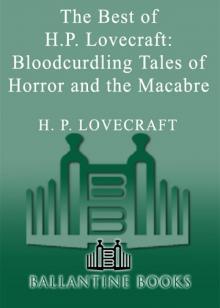 The Best of H.P. Lovecraft
The Best of H.P. Lovecraft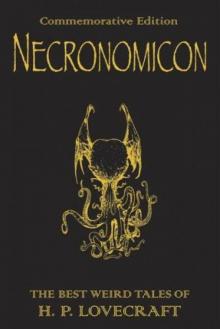 The Definitive H.P. Lovecraft: 67 Tales Of Horror In One Volume
The Definitive H.P. Lovecraft: 67 Tales Of Horror In One Volume The Complete Works of H.P. Lovecraft
The Complete Works of H.P. Lovecraft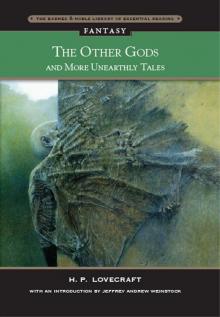 Other Gods and More Unearthly Tales
Other Gods and More Unearthly Tales Lovecraft's Fiction Volume I, 1905-1925
Lovecraft's Fiction Volume I, 1905-1925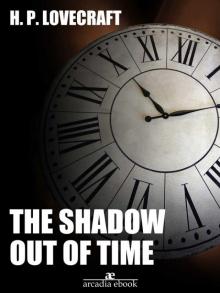 The Shadow Out of Time
The Shadow Out of Time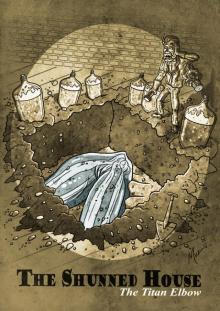 The Shunned House
The Shunned House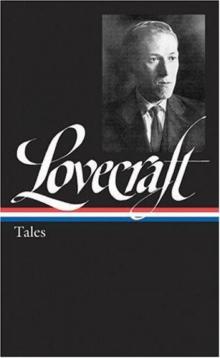 Lovecraft's Fiction Volume II, 1926-1928
Lovecraft's Fiction Volume II, 1926-1928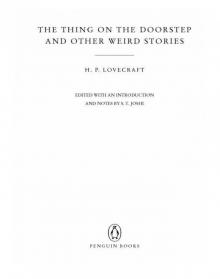 The Thing on the Doorstep and Other Weird Stories
The Thing on the Doorstep and Other Weird Stories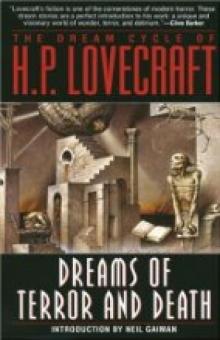 Dream Cycle of H. P. Lovecraft: Dreams of Terror and Death
Dream Cycle of H. P. Lovecraft: Dreams of Terror and Death Great Tales of Horror
Great Tales of Horror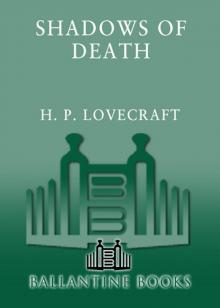 Shadows of Death
Shadows of Death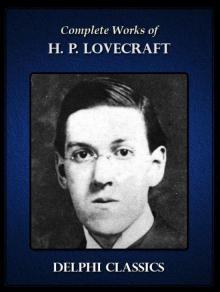 Delphi Complete Works of H. P. Lovecraft (Illustrated)
Delphi Complete Works of H. P. Lovecraft (Illustrated)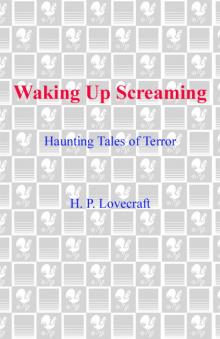 Waking Up Screaming: Haunting Tales of Terror
Waking Up Screaming: Haunting Tales of Terror H.P. Lovecraft Goes to the Movies
H.P. Lovecraft Goes to the Movies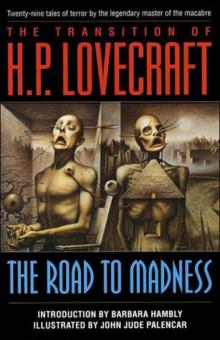 The Road to Madness
The Road to Madness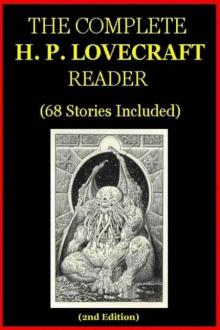 The Complete H.P. Lovecraft Reader (68 Stories)
The Complete H.P. Lovecraft Reader (68 Stories)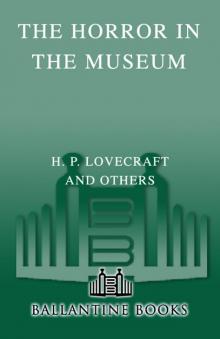 The Horror in the Museum
The Horror in the Museum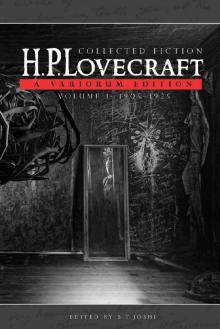 Collected Fiction Volume 1 (1905-1925): A Variorum Edition
Collected Fiction Volume 1 (1905-1925): A Variorum Edition Lovecrafts_Fiction, vol.I_1905-1925
Lovecrafts_Fiction, vol.I_1905-1925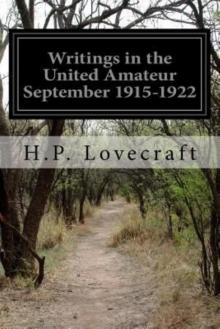 Writings in the United Amateur, 1915-1922
Writings in the United Amateur, 1915-1922 H.P. Lovecraft: The Complete Works
H.P. Lovecraft: The Complete Works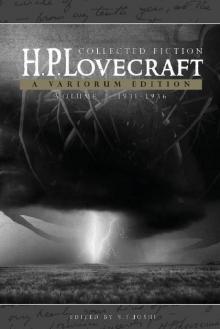 Collected Fiction Volume 3 (1931-1936): A Variorum Edition
Collected Fiction Volume 3 (1931-1936): A Variorum Edition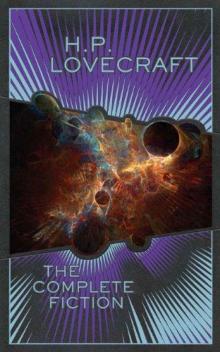 H.P. Lovecraft: The Complete Fiction
H.P. Lovecraft: The Complete Fiction Collected Fiction Volume 2 (1926-1930): A Variorum Edition
Collected Fiction Volume 2 (1926-1930): A Variorum Edition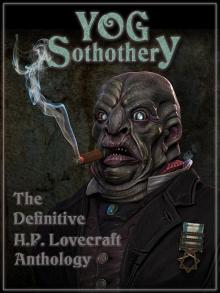 Yog Sothothery - The Definitive H.P. Lovecraft Anthology
Yog Sothothery - The Definitive H.P. Lovecraft Anthology The Complete H.P. Lovecraft Collection (Xist Classics)
The Complete H.P. Lovecraft Collection (Xist Classics)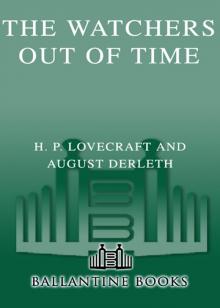 The Watchers Out of Time
The Watchers Out of Time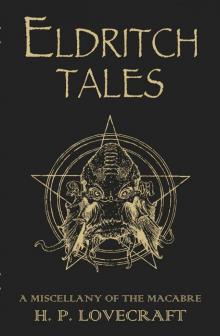 Eldritch Tales
Eldritch Tales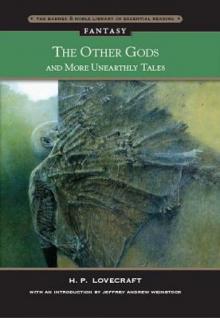 The Other Gods And More Unearthly Tales
The Other Gods And More Unearthly Tales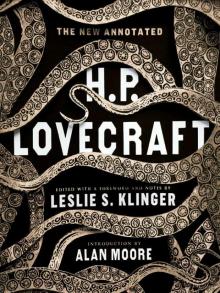 The New Annotated H. P. Lovecraft
The New Annotated H. P. Lovecraft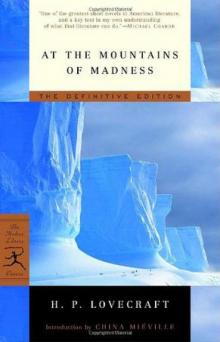 At the mountains of madness
At the mountains of madness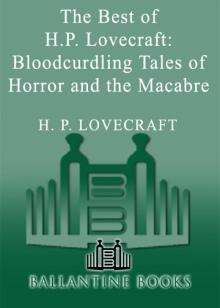 Bloodcurdling Tales of Horror and the Macabre
Bloodcurdling Tales of Horror and the Macabre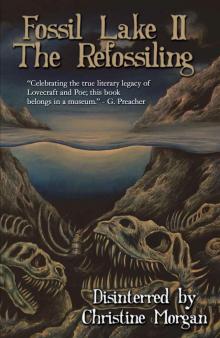 Fossil Lake II: The Refossiling
Fossil Lake II: The Refossiling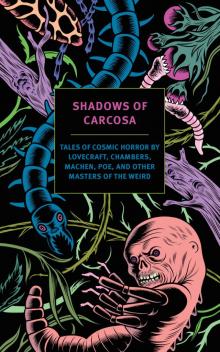 Shadows of Carcosa: Tales of Cosmic Horror by Lovecraft, Chambers, Machen, Poe, and Other Masters of the Weird
Shadows of Carcosa: Tales of Cosmic Horror by Lovecraft, Chambers, Machen, Poe, and Other Masters of the Weird H. P. Lovecraft
H. P. Lovecraft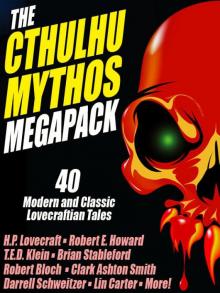 The Cthulhu Mythos Megapack
The Cthulhu Mythos Megapack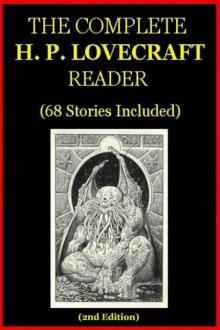 The Complete H. P. Lovecraft Reader (2nd Edition)
The Complete H. P. Lovecraft Reader (2nd Edition)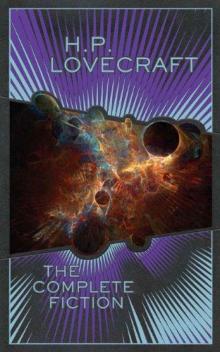 The Complete Fiction
The Complete Fiction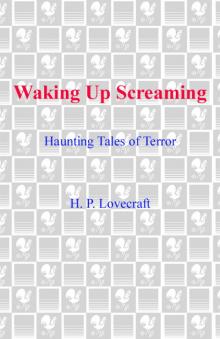 Waking Up Screaming
Waking Up Screaming Transition of H. P. Lovecraft
Transition of H. P. Lovecraft![[1935] The Shadow Out of Time Read online](http://i1.bookreadfree.com/i2/04/12/1935_the_shadow_out_of_time_preview.jpg) [1935] The Shadow Out of Time
[1935] The Shadow Out of Time The Horror Megapack
The Horror Megapack